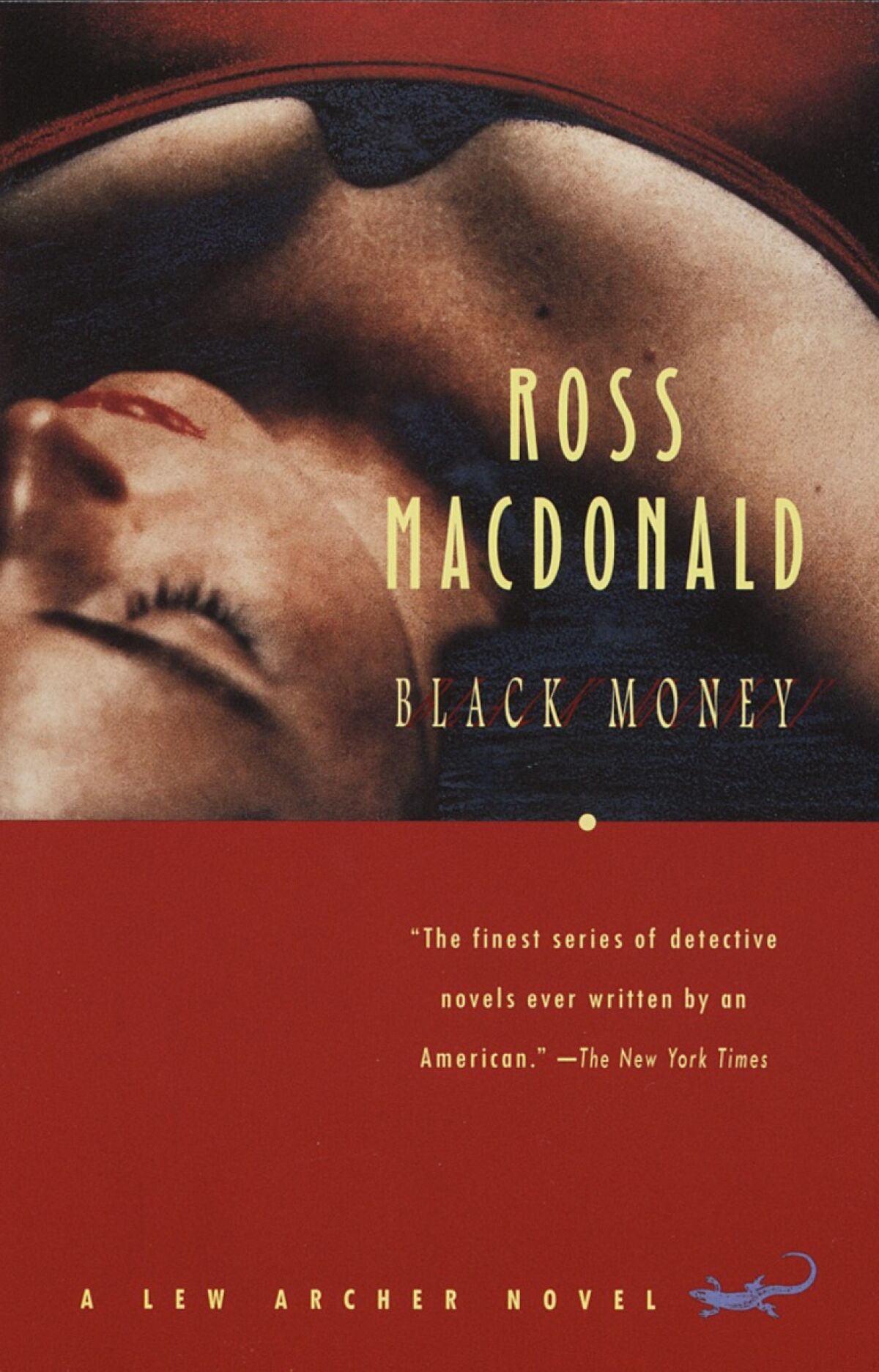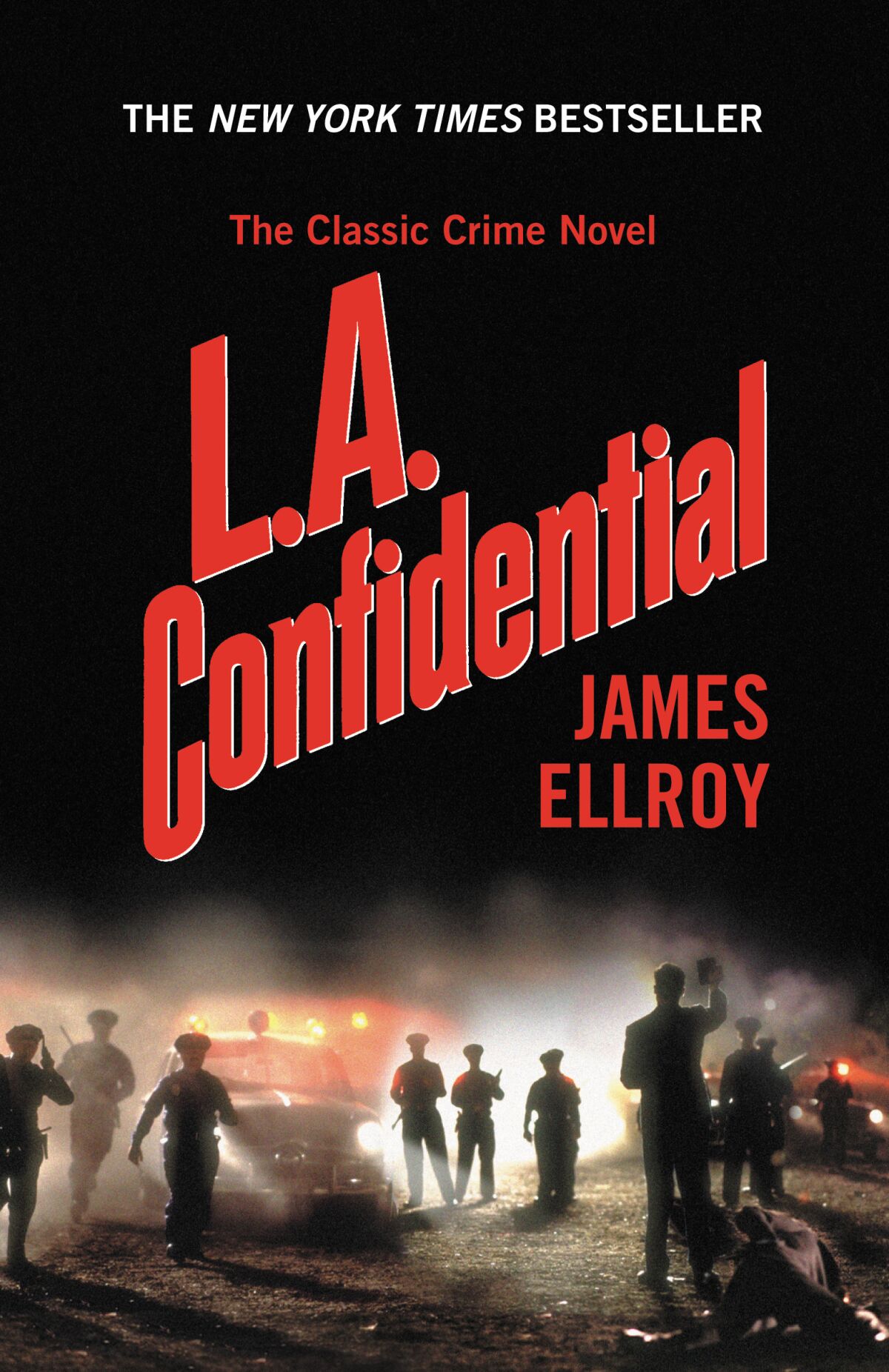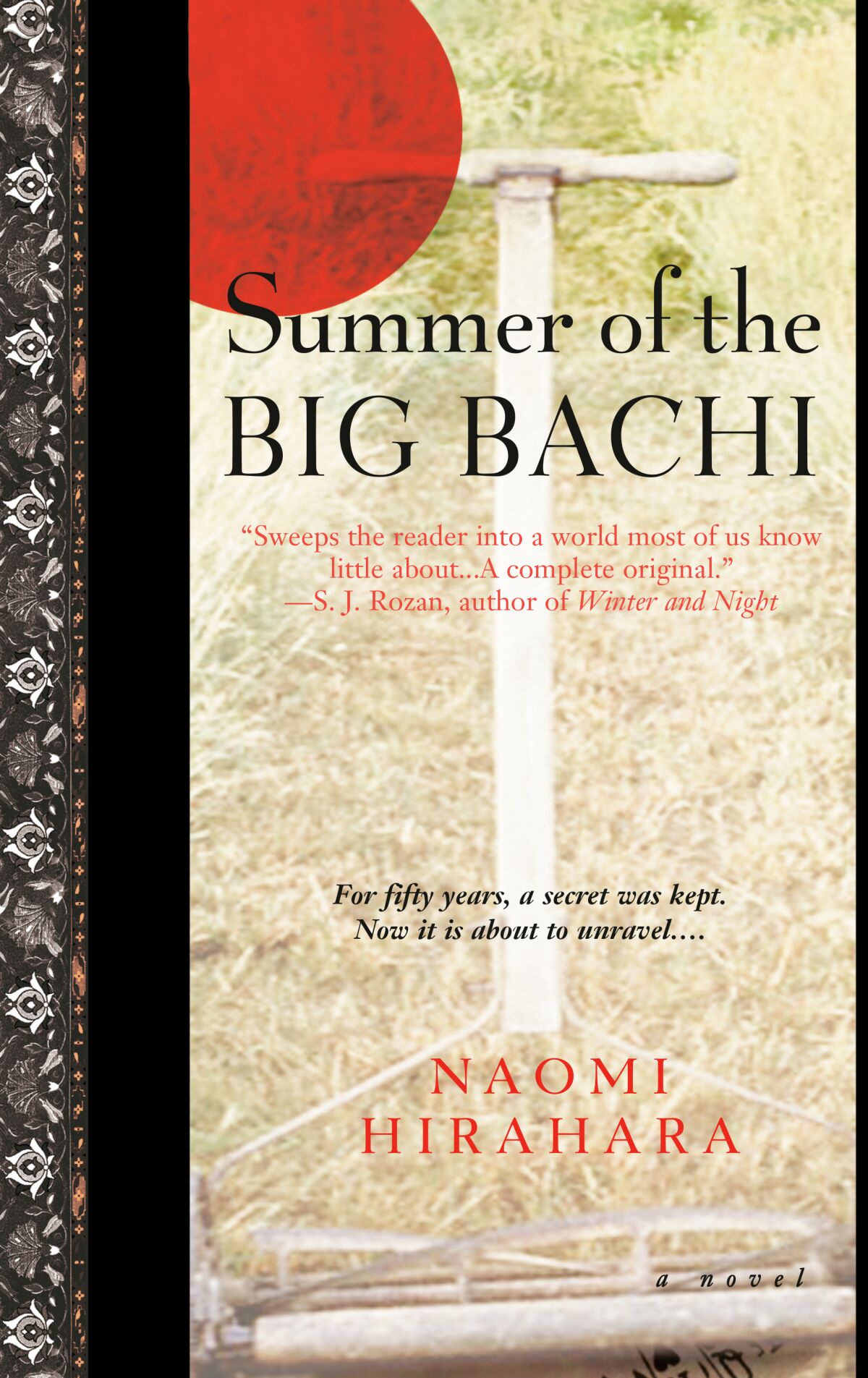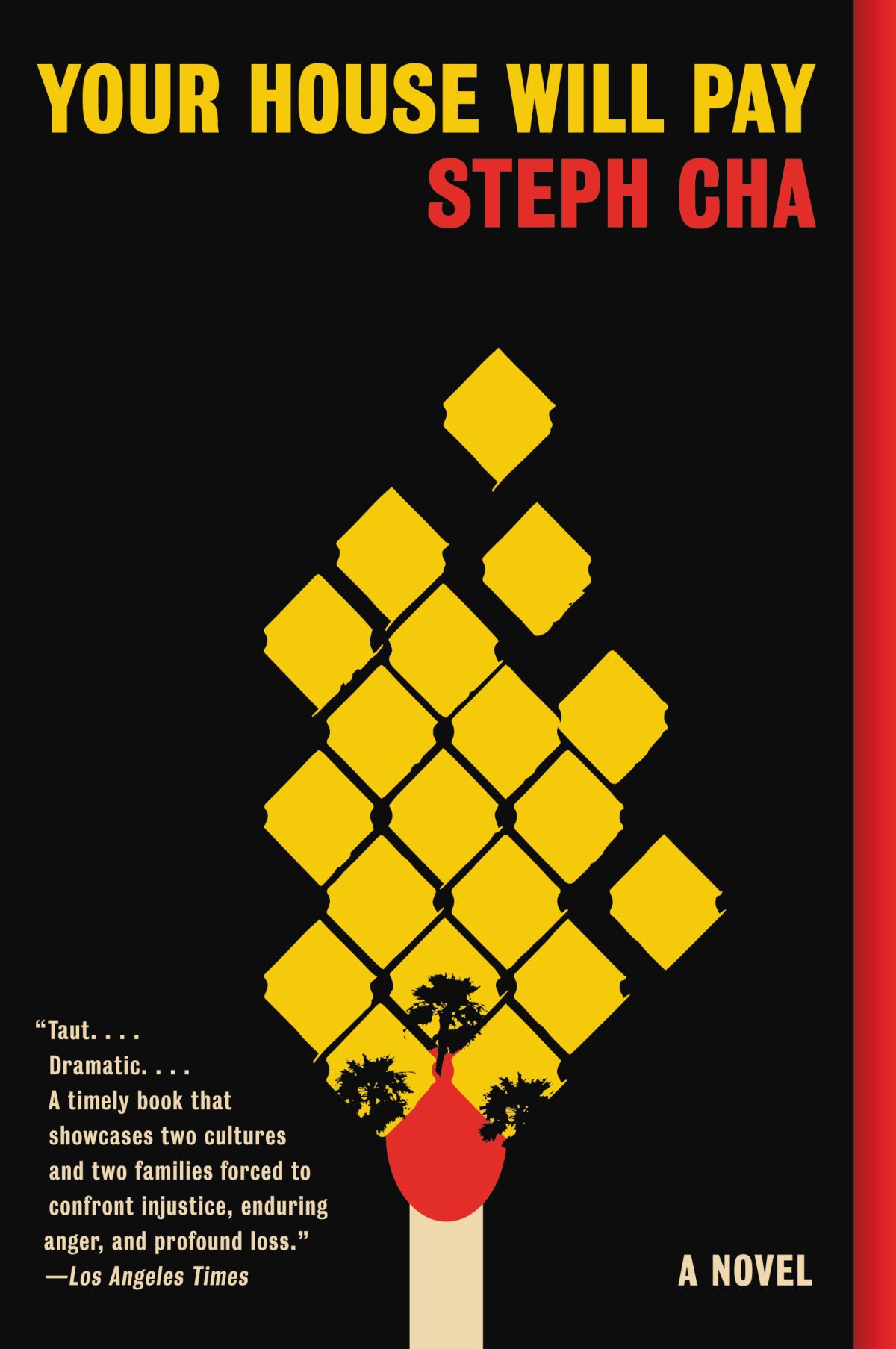The Ultimate LA Bookshelf: Mystery & Crime
For our Ultimate L.A. Bookshelf, we asked writers with deep ties to the city to name their favorite Los Angeles books across eight categories or genres. Based on 95 responses, here are the 13 most essential books of mystery or crime — from Chandler, Hughes, Mosley and Ellroy to Steph Cha and Ivy Pochoda, with some “Helter Skelter” in between.
- If you buy books linked on our site, The Times may earn a commission from Bookshop.org, whose fees support independent bookstores.
…
“The Jung Generation” from Dramatic Crimes of 1927 by Milton MacKaye, 1928
Journalist MacKaye, based in New York, worked hard to get the raw material for these true crime tales. “The Jung Generation” focuses on William Edward Hickman, “a handsome, curly-haired boy who looked more like a college sophomore than a murderer,” who came to Los Angeles and committed “the most scabrous crime of 1927.” Hickman, taking (mistaken) revenge on a former supervisor, kidnapped one of his twin daughters. Police were alerted and ransom paid, but the girl had been murdered and dismembered in Hickman’s Angelino Heights apartment. With narrative flash and grisly detail, MacKaye made L.A. true crime literary. — CK
The Big Sleep by Raymond Chandler, 1939
Chandler wrote like a broken, hungover angel, seeing the beauty and darkness of Los Angeles in tandem. This debut novel delivered world-weary detective Philip Marlowe to readers with lines such as, “It seemed like a nice neighborhood to have bad habits in.” Marlowe begins in a rich man’s house and deftly crosses through seedier scenes — pornography dealers, Hollywood nightclubs, murders — only to return and leave a trail of broken hearts. As iconic as he is now, it took a while for Marlowe to catch on, after a circular journey through Humphrey Bogart’s film version, the coining of “noir” in France and the enshrinement of Chandler’s gimlet-eyed vision of L.A. — CK
In a Lonely Place by Dorothy B. Hughes, 1947
Has there ever been a more vivid opening in the literature of Los Angeles? A man pursues a woman from a Santa Monica bus stop down the California Incline on a fog-saturated night. Nothing happens, but the air of menace is so palpable you can feel it in your chest. Hughes’ novel may be best known for inspiring the 1950 Bogart movie of the same name, but the book is so much better, so much more dark. At its center is Dix Steele, a sociopathic killer masquerading as a writer, who in the end turns out to be too smart for his own good. — DLU

The Long Goodbye by Raymond Chandler, 1953
Chandler’s last great novel is not only a piece of crime writing; it is also an ambitious work of social fiction, with some autobiographical threads. Marlowe has grown older and more vulnerable, which makes “The Long Goodbye” a precursor to the novels of contemporary writers such as Walter Mosley and Michael Connelly, whose characters age and develop from book to book. “Who can write a sentence as sharp or create a mood as cleanly as Chandler?” wonders Maria Hummel. “It was as if he used ink when so many writers use pencil.” Opinions vary, but trust me: This is Chandler’s greatest hit. — DLU
Black Money by Ross Macdonald, 1966
Some prefer Macdonald’s perverse, Edgar-winning mystery “The Chill” — without whose example “Chinatown” is hard to imagine — but more votes went to this other gem, the author’s own favorite among his many books about private eye Lew Archer. Yes, Hammett and Chandler got there first. But when did they write a murder story that doubles as both an academic satire and a tragic indictment of anti-immigrant prejudice? — DK

(Vintage Crime/Black Lizard)
Helter Skelter by Vincent Bugliosi with Curt Gentry, 1974
The flurry of killings orchestrated by Charles Manson in the summer of 1969 struck fear into Hollywood and brutally ended a chapter of Los Angeles’ counterculture. The horrifying details, flawed investigation and successful trial are given a straightforward treatment by Bugliosi, the deputy district attorney made famous by prosecuting Manson and his followers. In contrast with the measured tone, the paperback included gruesome crime scene photographs, which not only drove home the horror but also guaranteed a yearlong spot on bestseller lists. — CK
Devil in a Blue Dress by Walter Mosley, 1990
Underemployed World War II vet Easy Rawlins debuted in this novel and quickly slipped onto detective fiction’s top shelf, landing comparisons to Marlowe and others. Mosley’s novel told a not-unfamiliar tale of murder and corruption in the City of Angels, but it did so along Crenshaw Boulevard instead of the rich enclaves of Pasadena. It showed, Rachel Howzell Hall writes, that “Black Los Angeles actually exists and there are heroes and dames here.” With snappy dialogue and rich atmosphere, Mosley created an iconic character with a new story to tell. — CK

L.A. Confidential by James Ellroy, 1990
Ellroy isn’t for everyone — but who is? Like Roy Lichtenstein, he repurposes retro pulp into art that’s somehow both ironizing and visceral. “L.A. Confidential,” hits hardest among the novels in his L.A. Quartet, entwining three cops — a well-connected straight-arrow, a fraudulent celebrity, a bruiser working out trauma through his own abuses — in a case that blows the lid open on the whole dirty town. Jordan Harper calls the Quartet “a portrait of the most American city from the bottom to the top, finding corruption at every level, brutality at every level, and even some shreds of hope.” — BK
Southland by Nina Revoyr, 2003
Crime fiction doesn’t get any more L.A. than this, in a murder mystery wrapped in a story about two families — one Japanese, the other Black — struggling to find purchase in a city torn apart by decades of oppression. In fact, scratch “crime fiction”: Let’s just call “Southland” the best L.A. novel of the last quarter-century. — MW

Summer of the Big Bachi by Naomi Hirahara, 2004
Hirahara’s cozy-ish mysteries are a Trojan horse from which hidden histories come pouring out — in particular the long story of Japanese assimilation and alienation in the U.S. It all began with this series opener featuring an amateur sleuth who survived the annihilation of Hiroshima. “Her debut introduced Mas Arai,” writes Katie Orphan, “and with him a part of L.A. that not many people knew: the world of older Japanese gardeners who made this city beautiful for years. In Mas’ case, it also gave him the knowledge & connections to solve quite a few crimes.” — BK
All Involved by Ryan Gattis, 2015
The premise is the only simple thing about Gattis’ Rashomon-like tale of a Latino gang war in Lynwood: The weeklong aftermath of the 1992 Rodney King verdict becomes something like “The Purge” — with law and order suspended, everyone’s out for revenge. Turning away from the uprising keeping the cops busy, Gattis zooms in on daily lives with the precision of Richard Price, even as blazing scenes of carjacking and street battle inject the narrative with Ellroy-level verve and violence. — BK

Your House Will Pay by Steph Cha, 2019 (13)
In this magnificent novel, Cha overturns all the conventions of crime fiction, even as she employs them to broader ends. Inspired by the 1991 murder of Latasha Harlins, the book moves from the 1992 uprising nearly to the present, tracing the effects of that killing on two families (one Black and one Korean). Cha is a deft stylist and a vivid creator of character, and she understands that there are no glib solutions in a situation such as this. “Some might call this a crime novel — and of course it is,” notes Tod Goldberg. “But it’s also the most profound look at modern Los Angeles I’ve read in recent memory.” — DLU
These Women by Ivy Pochoda, 2020 (3)
Loosely based on the case of the Grim Sleeper, the serial killer so named for taking a 14-year “nap” between killing sprees, Pochoda turns the focus entirely on the women — survivors, witnesses and, in her most compelling character, a petite, street-savvy detective, Essie. “Pochoda’s serial killer novel flips the paradigm,” says Goldberg, “focusing on the victims of terrible crimes instead of the perpetrators, and the result is a novel that does an anthropological dig of Los Angeles’ streets and subcultures. Reading it is like putting together a 1,000-piece puzzle, but the result is high art.” — BK
For all the latest Entertainment News Click Here
For the latest news and updates, follow us on Google News.
